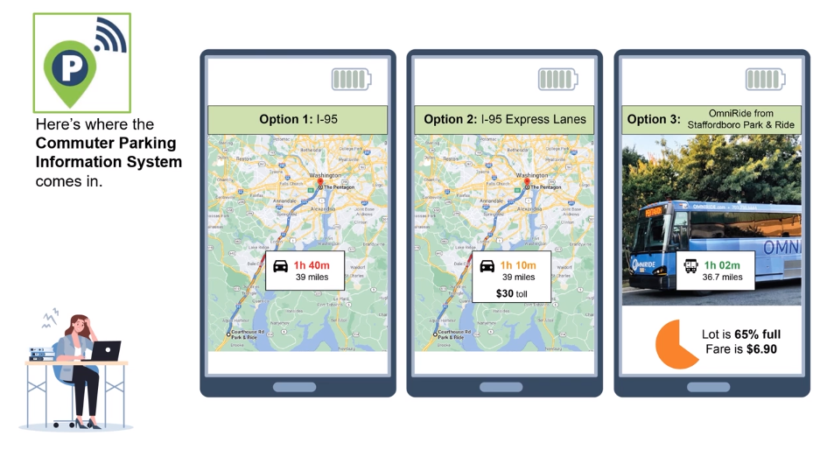Public and stakeholder engagement is not only critical to the success of any planning project – it is also an imperative for professional planners. The American Institute of Certified Planners includes “giv[ing] people the opportunity to have a meaningful impact on the development of plans and programs that may affect them” as one of its principles.
However, effectively engaging the public can be difficult even under “normal” circumstances, with those most active in planning processes generally tending to be more privileged in terms of income, race, and other characteristics. During a pandemic, many if not most people are under greater stress due to challenges such as a sick family member, a job loss, additional childcare responsibilities, or simply the difficulties associated with isolation. For many people, especially those experiencing economic and personal stress, providing input on a transportation plan or project may not rank anywhere among their list of top priorities. For this reason, it is especially critical now that public engagement accommodate people’s needs and circumstances.
The pandemic has given our team at Foursquare ITP the opportunity to adapt and innovate our methods and strategies for public engagement. On the positive side, moving nearly all public engagement efforts to be remote has made it easier for many people to participate in the feedback-gathering process associated with transportation plans and projects, as they no longer need to leave their homes. In some cases, we’ve seen participation at public “meetings” increase. (The fact that many people now have more free time in general has probably also made a difference!) Although we at Foursquare ITP previously had many of the tools we are now using frequently for virtual public engagement, the pandemic has accelerated our embrace of them. Tools we have been using include video-conferencing, live polling, “game-ified” surveys, virtual whiteboards, and creating compelling videos and other visuals to convey complicated concepts to the general public.

While virtual engagement is a preferable way to participate in planning processes for many people, we have not forgotten that it creates even greater barriers to participation for some people, particularly those with disabilities or without internet connections or smartphones. With this in mind, we have been working with clients to identify safe (virtual) ways to provide the public with opportunities to have a say in important planning processes. For moveDC (the District’s long range transportation plan update), we used Google Voice to set up a phone line dedicated to the project, with options to talk to project team members live during what we’re calling “telephone office hours,” or to leave a voicemail and receive a call-back at a requested time. We’ve taken both open-ended feedback as well as administered a project survey through this phone-based option. For moveDC and other projects, we’ve also tried strategies such as automated phone calls to administer a survey and advertising information about how to provide input in a way that targets underrepresented populations. And we are still using traditional outreach methods that embrace the principle of “meeting people where they are,” such as posting information about how to participate in the planning process at the busiest bus stops, community centers, and locations where people access critical social services.
Of course, there are important considerations and strategies for public engagement we always consider, during a pandemic or not:
- Engaging with leaders in the community – Community leaders know the needs and communication preferences of their constituents the best and are in an ideal position to inform them about opportunities to have a say in planning processes. For this reason, it’s especially critical to work with community leaders to find ways to amplify awareness and participation.
- Asking the right questions – Focusing on questions like “What matters to you?” is so important. I’ve taken recent inspiration from a couple of posts on the Strong Towns blog focused on this subject: “Most public engagement is worthless” by Charles Marohn and “Most public engagement is worse than worthless” by Ruben Anderson. (I’d emphasize that these titles reflect a criticism of engagement methods used by many planners, not the principle or importance of public engagement itself!). These articles point out that it’s important to focus on what outcomes and values matter to people, while embracing the technical knowledge of experts to identify and communicate the most effective ways to achieve them.
- Respecting people’s time and “getting to the point” – While it’s equally important to share complete information with the public (including full information for those who want to pore over every detail!), it’s important for planners to be clear about what they want to know from the public (including using accessible language and explanations of concepts) and focus on that. It’s also advantageous to get to the point quickly and give people easy ways to have a say, especially in times when people feel pulled in many directions and their time or attention spans are limited!
As the pandemic subsides in 2021, we look forward to incorporating many of the experiences and skills we’ve developed in virtual engagement into our planning processes, while re-embracing the in-person engagement strategies we know to be effective. We will certainly have a renewed appreciation for opportunities to interact in person with people in the communities we serve!